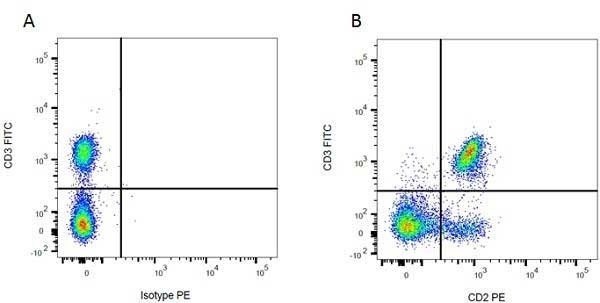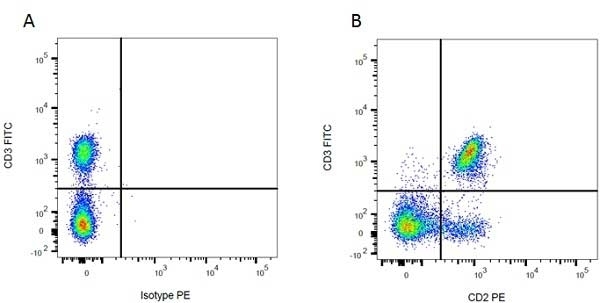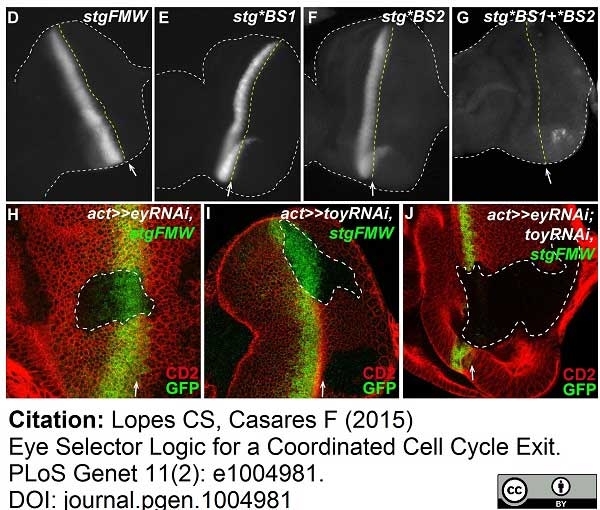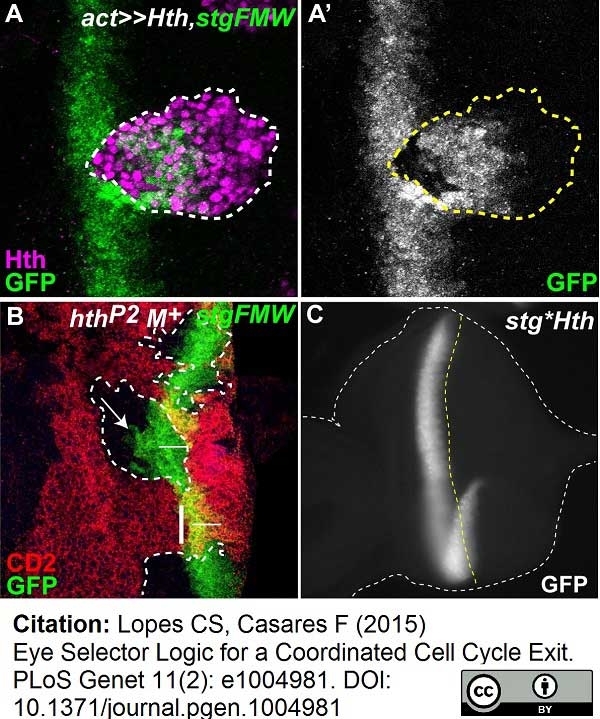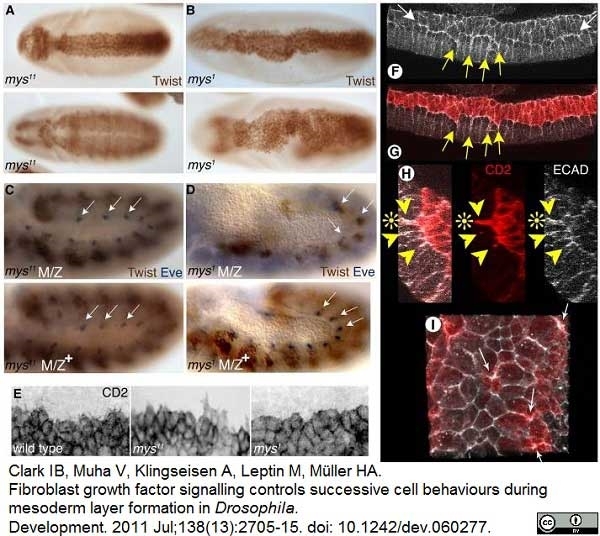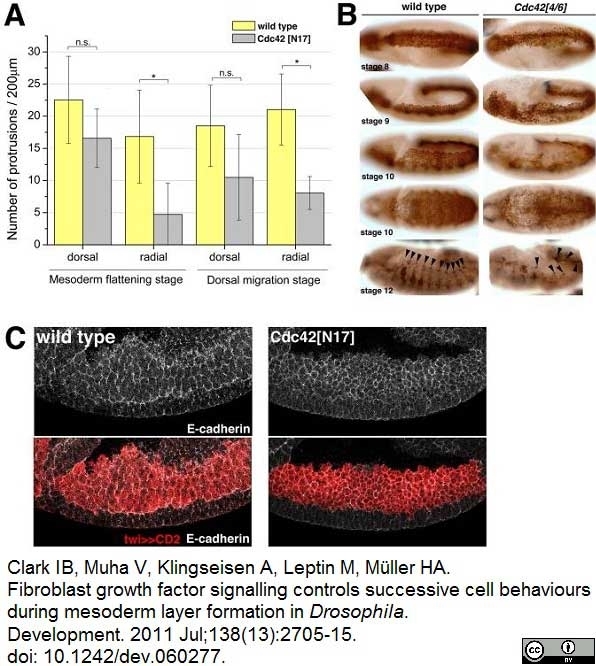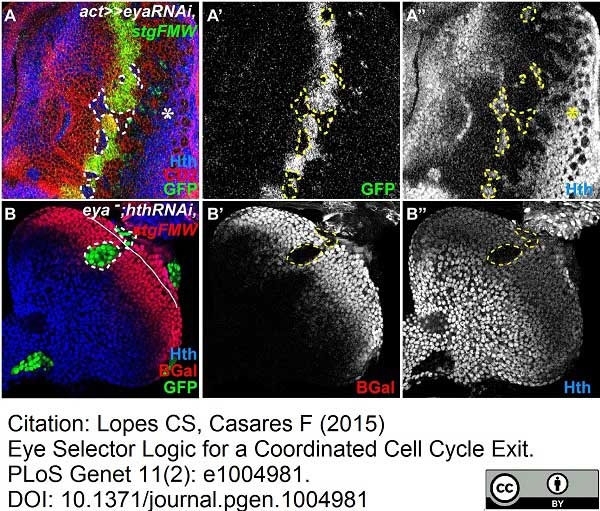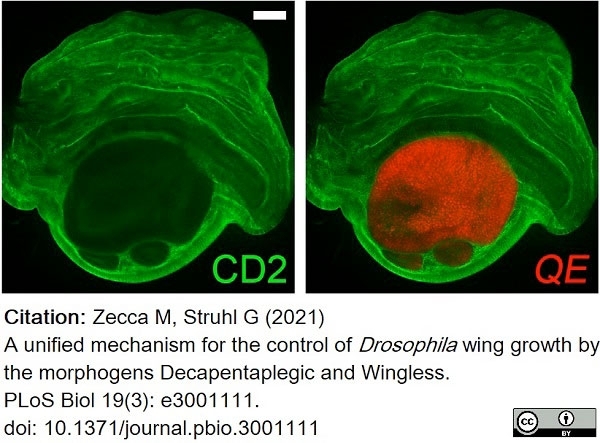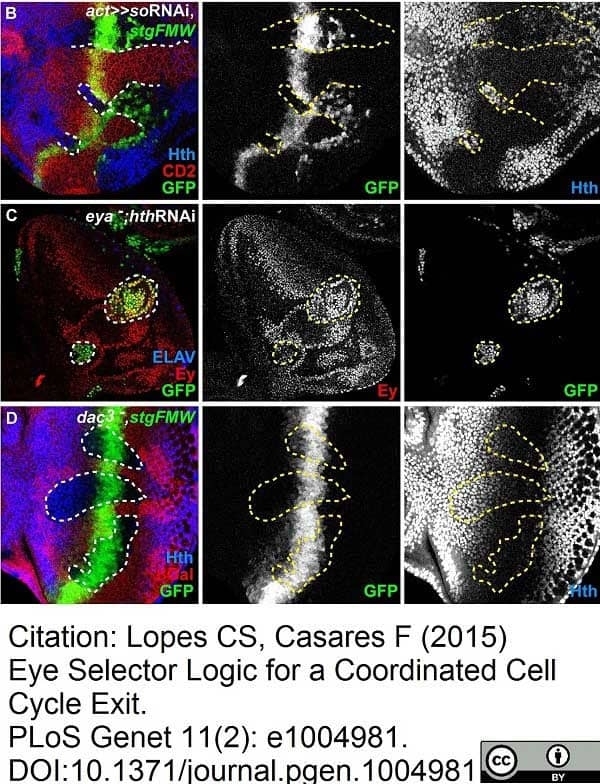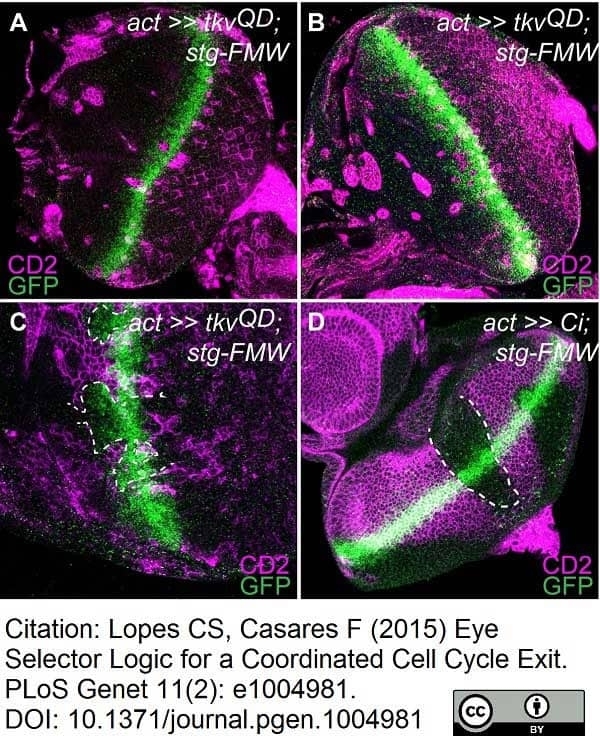CD2 antibody | OX-34












Mouse anti Rat CD2:Alexa Fluor® 647
- Product Type
- Monoclonal Antibody
- Clone
- OX-34
- Isotype
- IgG2a
- Specificity
- CD2
| Mouse anti Rat CD2 antibody, clone OX-34 recognizes a determinant on thymocytes and peripheral T-cells but it does not bind to B cells or peritoneal macrophages. The antigen recognized by this antibody is a 50-54 kDa glycoprotein, homolog of the human CD2 antigen (Williams et al. 1987). |
- Target Species
- Rat
- Product Form
- Purified IgG conjugated to Alexa Fluor® 647 - liquid
- Preparation
- Purified IgG prepared by affinity chromatography on Protein G from tissue culture supernatant
- Buffer Solution
- Phosphate buffered saline
- Preservative Stabilisers
- 0.09% sodium azide (NaN3)
1% bovine serum albumin - Immunogen
- Activated rat T helper cells.
- Approx. Protein Concentrations
- IgG concentration 0.05 mg/ml
- Fusion Partners
- Spleen cells from immunised BALB/c mice were fused with cells of the NS1 mouse myeloma cell line.
- Max Ex/Em
-
Fluorophore Excitation Max (nm) Emission Max (nm) Alexa Fluor®647 650 665 - Regulatory
- For research purposes only
- Guarantee
- 12 months from date of despatch
- Acknowledgements
- This product is provided under an intellectual property licence from Life Technologies Corporation. The transfer of this product is contingent on the buyer using the purchase product solely in research, excluding contract research or any fee for service research, and the buyer must not sell or otherwise transfer this product or its components for (a) diagnostic, therapeutic or prophylactic purposes; (b) testing, analysis or screening services, or information in return for compensation on a per-test basis; (c) manufacturing or quality assurance or quality control, or (d) resale, whether or not resold for use in research. For information on purchasing a license to this product for purposes other than as described above, contact Life Technologies Corporation, 5791 Van Allen Way, Carlsbad CA 92008 USA or outlicensing@thermofisher.com
Avoid repeated freezing and thawing as this may denature the antibody. Storage in frost-free freezers is not recommended. This product is photosensitive and should be protected from light.
| Application Name | Verified | Min Dilution | Max Dilution |
|---|---|---|---|
| Flow Cytometry | Neat |
- Flow Cytometry
- Use 10μl of the suggested working dilution to label 106 cells in 100μl
| Description | Product Code | Applications | Pack Size | List Price | Your Price | Quantity | |
|---|---|---|---|---|---|---|---|
| Mouse IgG2a Negative Control:Alexa Fluor® 647 | MCA1210A647 | F | 100 Tests/1ml |
|
Log in | ||
| List Price | Your Price | ||||||
|
|
Log in | ||||||
| Description | Mouse IgG2a Negative Control:Alexa Fluor® 647 | ||||||
References for CD2 antibody
-
Williams, A.F. et al. (1987) Similarities in sequences and cellular expression between rat CD2 and CD4 antigens.
J Exp Med. 165 (2): 368-80. -
Barclay, A.N. (1981) The localization of populations of lymphocytes defined by monoclonal antibodies in rat lymphoid tissues.
Immunology. 42 (4): 593-600. -
Whiteland, J.L. et al. (1995) Immunohistochemical detection of T-cell subsets and other leukocytes in paraffin-embedded rat and mouse tissues with monoclonal antibodies.
J Histochem Cytochem. 43 (3): 313-20. -
Baker, S.C. et al. (2011) Cellular Integration and Vascularisation Promoted by a Resorbable, Particulate-Leached, Cross-Linked Poly(ε-caprolactone) Scaffold.
Macromol Biosci. 11: 618-27. -
Romani, P. et al. (2009) Cell survival and polarity of Drosophila follicle cells require the activity of ecdysone receptor B1 isoform.
Genetics. 181: 165-75. -
Bastock, R. et al. (2003) Strabismus is asymmetrically localised and binds to Prickle and Dishevelled during Drosophila planar polarity patterning.
Development. 130: 3007-14. -
Brückner, K. et al. (2000) Glycosyltransferase activity of Fringe modulates Notch-Delta interactions.
Nature. 406: 411-5. -
Liversidge, J. et al. (2002) Nitric oxide mediates apoptosis through formation of peroxynitrite and Fas/Fas-ligand interactions in experimental autoimmune uveitis.
Am J Pathol. 160: 905-16.
View The Latest Product References
-
Sarpal, R. et al. (2012) Mutational analysis supports a core role for Drosophila α-catenin in adherens junction function.
J Cell Sci. 125: 233-45. -
Zhang, H. et al. (2011) Basic residues in the T-cell receptor ζ cytoplasmic domain mediate membrane association and modulate signaling.
Proc Natl Acad Sci U S A. 108: 19323-8. -
Heck, B.W. et al. (2012) The transcriptional corepressor SMRTER influences both Notch and ecdysone signaling during Drosophila development.
Biol Open. 1 (3): 182-96. -
Clark, I.B. et al. (2011) Fibroblast growth factor signalling controls successive cell behaviours during mesoderm layer formation in Drosophila.
Development. 138: 2705-15. -
Domanitskaya, E. and Schüpbach, T. (2012) CoREST acts as a positive regulator of Notch signaling in the follicle cells of Drosophila melanogaster.
J Cell Sci. 125: 399-410. -
Dragovic, R.A. et al. (2015) Isolation of syncytiotrophoblast microvesicles and exosomes and their characterisation by multicolour flow cytometry and fluorescence Nanoparticle Tracking Analysis.
Methods. 87: 64-74. -
Zecca, M. & Struhl, G. (2021) A unified mechanism for the control of Drosophila. wing growth by the morphogens Decapentaplegic and Wingless.
PLoS Biol. 19 (3): e3001111.
- Synonyms
- E-Rosette Receptor
- LFA-2
- RRID
- AB_324773
- UniProt
- P08921
- Entrez Gene
- Cd2
- GO Terms
- GO:0001948 glycoprotein binding
- GO:0003823 antigen binding
- GO:0016021 integral to membrane
- GO:0005615 extracellular space
- GO:0030971 receptor tyrosine kinase binding
- GO:0009986 cell surface
- GO:0016337 cell-cell adhesion
- GO:0019901 protein kinase binding
- GO:0042110 T cell activation
- View More GO Terms
- GO:0042803 protein homodimerization activity
- GO:0043234 protein complex
- GO:0043621 protein self-association
- GO:0044214 fully spanning the plasma membrane
- GO:0045121 membrane raft
MCA154A647
If you cannot find the batch/lot you are looking for please contact our technical support team for assistance.
Please Note: All Products are "FOR RESEARCH PURPOSES ONLY"
View all Anti-Rat ProductsAlways be the first to know.
When we launch new products and resources to help you achieve more in the lab.
Yes, sign me up